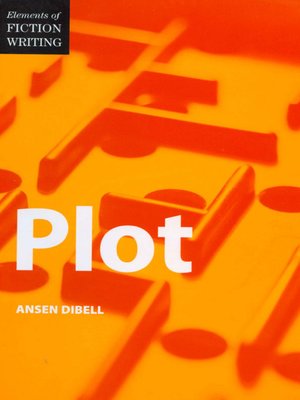
Sign up to save your library
With an OverDrive account, you can save your favorite libraries for at-a-glance information about availability. Find out more about OverDrive accounts.
Find this title in Libby, the library reading app by OverDrive.



Search for a digital library with this title
Title found at these libraries:
| Library Name | Distance |
|---|---|
| Loading... |
"There are ways to create, fix, steer and discover plots—ways which, over a writing life, you'd eventually puzzle out for yourself," writes Ansen Dibell. "They aren't laws. They're an array of choices, things to try, once you've put a name to the particular problem you're facing now."
That's what this book is about: identifying those choices (whose viewpoint? stop and explain now, or wait? how can this lead to that?), then learning what narrative problems they are apt to create and how to choose an effective strategy for solving them. The result? Strong, solid stories and novels that move.
Inside you'll discover how to:
• test a story idea (using four simple questions) to see if it works
• convince your reader that not only is something happening, but that something's going to happen and it all matters intensely
• handle viewpoint shifts, flashbacks, and other radical jumps in your storyline weave plots with subplots
• get ready for and write your Big Scenes
• balance scene and summary narration to produce good pacing
• handle the extremes of melodrama by "faking out" your readers—making them watch your right hand while your left hand is doing something sneaky
• form subtle patterns with mirror characters and echoing incidents
• choose the best type of ending—linear or circular, happy or downbeat, or (with caution!) a trick ending
Whether your fiction is short or long, subtle or direct, you'll learn to build strong plots that drive compelling, unforgettable stories your readers will love.
That's what this book is about: identifying those choices (whose viewpoint? stop and explain now, or wait? how can this lead to that?), then learning what narrative problems they are apt to create and how to choose an effective strategy for solving them. The result? Strong, solid stories and novels that move.
Inside you'll discover how to:
• test a story idea (using four simple questions) to see if it works
• convince your reader that not only is something happening, but that something's going to happen and it all matters intensely
• handle viewpoint shifts, flashbacks, and other radical jumps in your storyline weave plots with subplots
• get ready for and write your Big Scenes
• balance scene and summary narration to produce good pacing
• handle the extremes of melodrama by "faking out" your readers—making them watch your right hand while your left hand is doing something sneaky
• form subtle patterns with mirror characters and echoing incidents
• choose the best type of ending—linear or circular, happy or downbeat, or (with caution!) a trick ending
Whether your fiction is short or long, subtle or direct, you'll learn to build strong plots that drive compelling, unforgettable stories your readers will love.







